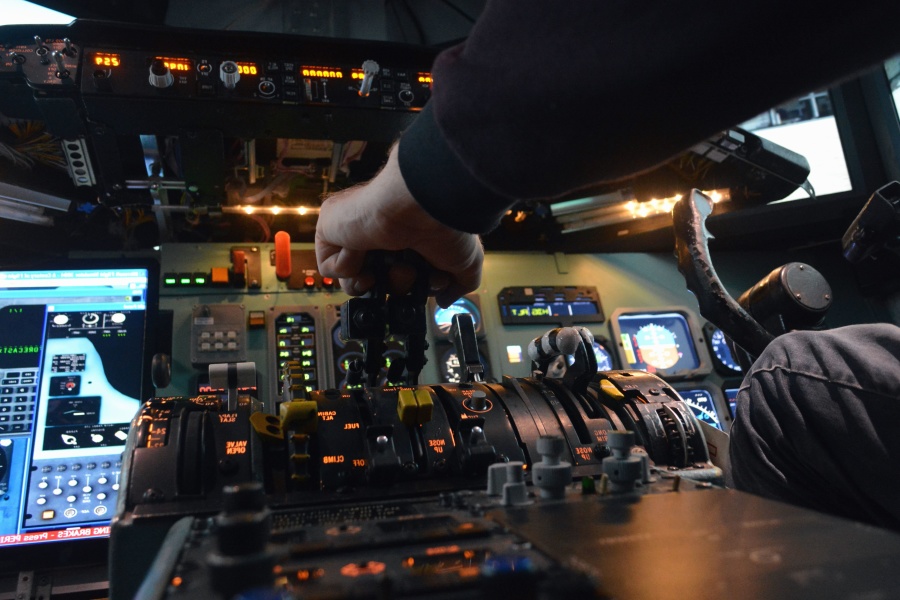The world is running out of trained pilots. With growing fleets, an aging workforce, training challenges, and fewer pilots leaving the military for commercial aviation, companies cannot solve this problem by throwing money at it. And airlines don"™t have time to waste: the deficit is already causing issues like wage inflation and flying schedule disruptions.
How can airlines avoid those damaging effects and ensure long-term success? First and foremost, they need to look internally and leverage existing talent and resources.
By the numbers: what"™s at stake?
In the short term, airlines need to find additional pilot capacity for the coming months and seasons. Long term, the industry as a whole needs to ensure that there will be enough pilots to fly the fleet that is expected to grow.
Looking at the longer term aspect of the shortage, the ICF global commercial fleet forecast predicts that the world fleet will increase by some 58% over the next 20 years. Assuming no change in pilot productivity and pilot-to-aircraft ratio, the pilot population needs to grow proportionally to the fleet.
Today, most aircraft are flown by two pilots. The number of pilots employed by an airline largely depends on the nature of the network and schedules it operates. Long-haul flying requires more pilots per aircraft than short-haul flying. A broad average of 13 pilots per aircraft, though, gives a good estimate of the size of the existing pilot pool.
ICF predicts a need to recruit more than 440,000 pilots for the commercial fleet in the coming 20 years.
Consequently, today"™s pilot pool of 377,000 pilots will need to grow by approximately 220,000 additional heads by 2037.
That number doesn"™t even account for pilots on the edge of retirement. A typical pilot career spans 40 years, which means that in 20 years, at least half of the current pilots can be expected to retire. In reality, more than half of our current pilots will retire, because the pilot population has been aging during the last decade. This is true in most of the regions, but especially in the developed world.
Overall, we can conclude that the industry will need to recruit more than 440,000 new pilots in the coming 20 years.
Let"™s put those numbers in perspective. At first glance, there is precedent for this kind of growth "” the global commercial fleet has already doubled over the previous 20 years. But our current situation is slightly different.
Where will new pilot capacity come from?
Traditional sources of additional pilot capacity are unlikely to supply enough pilots, quickly enough this time.
In the past, airlines facing a shortage could recruit pilots from the military. Today though, even the U.S. Air Force suffers from a lack of applicants. Further, as the military increasingly relies on drones, they will not need as many pilots per aircraft in the future. The ones they do need will likely require different skills than their commercial counterparts.
Also, in the past, many aircraft had a third or fourth crew member in the cockpit. When these positions were no longer needed in more modern aircraft, pilots simply progressed to become first officers and captains. This supply of pilots is also no longer available now, unless the industry moves to a single pilot aircraft technology, but there seems to be little support for such a move.
Discounting the unlikely scenario that the flight time limitations will be eased, the next generation of pilots will need to come from other sources, such as:
Pilots who do not fly for commercial airlines. This pool is quite large: only 29% of U.S. pilot licenses are valid for commercial air transport (26% in the UK).
Aspiring pilots from outside the industry.These professionals are the most expensive source given the substantial investment and time needed to train them.
It"™s unlikely, though, that either one of these could offer a quick fix "” for one, the attractiveness of becoming an airline pilot has faded over the years. Also, recruits from these sources need to be trained, which can take years. In the short term, airlines facing pilot shortages can increase pilot salaries and attract pilots from other airlines who are less able to raise salaries "” but this does not solve the capacity shortage on an industry level…



